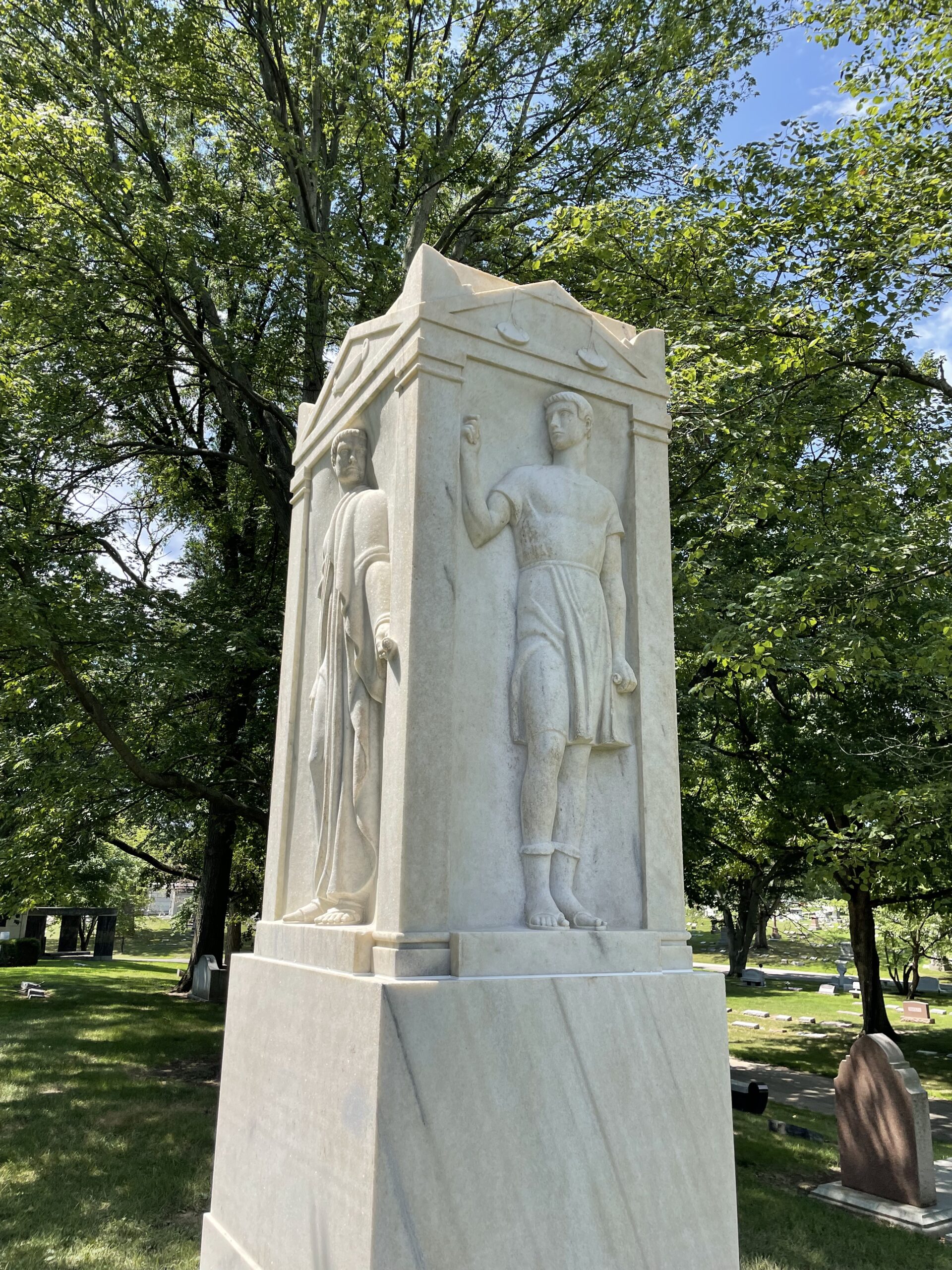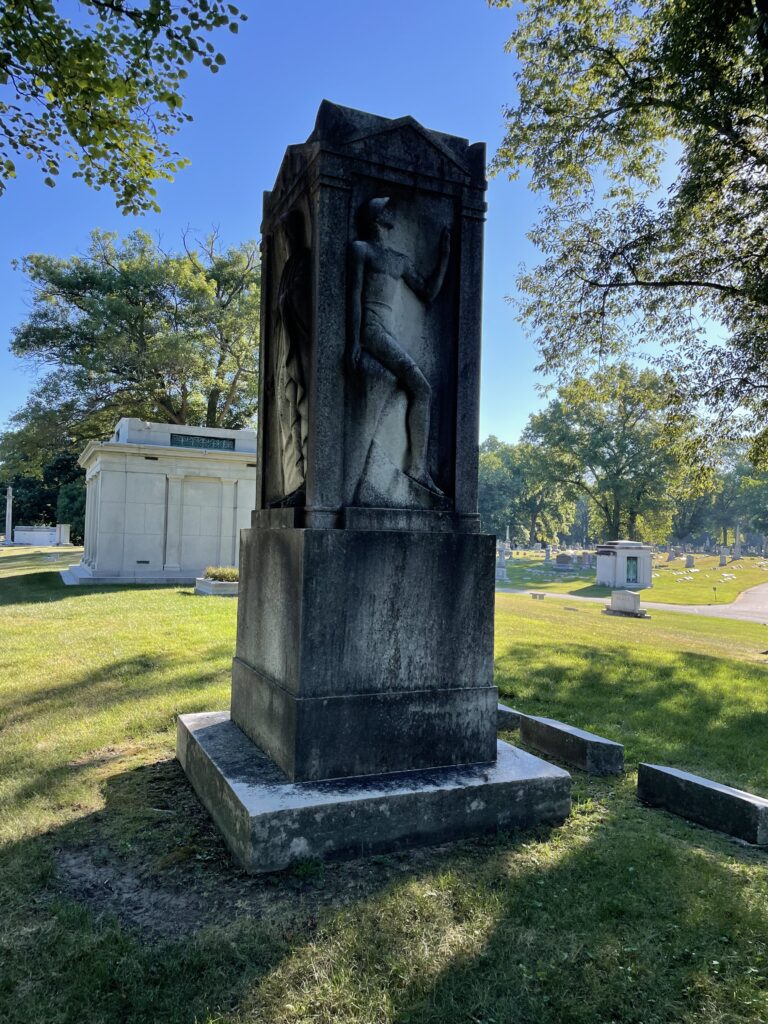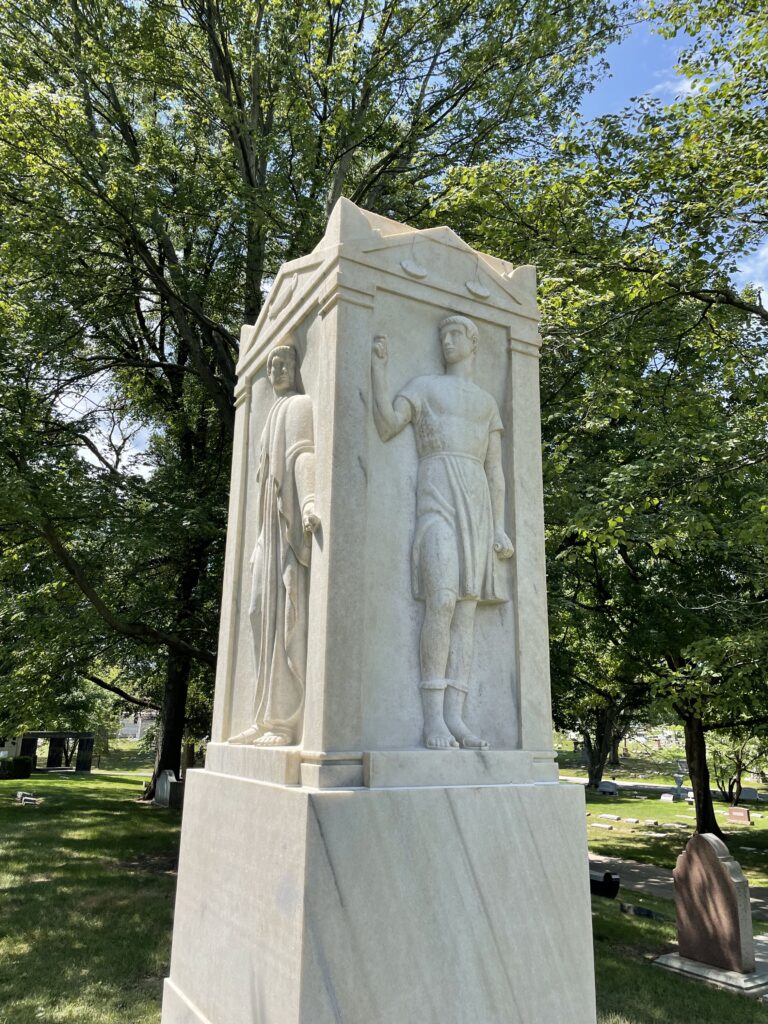Beveridge Monument
Albert Jeremiah Beveridge (October 6, 1862 – April 27, 1927) was a historian and US senator from Indiana. He was an intellectual leader of the Progressive Era and a biographer of Chief Justice John Marshall and President Abraham Lincoln.
Born in Ohio, his parents moved to Indiana soon after his birth. Beveridge graduated from Indiana Asbury University (now DePauw University) in 1885, with a Ph.B. degree. In 1887, he was admitted to the Indiana bar and practiced law in Indianapolis. In 1899, Beveridge was appointed to the U.S. Senate as a Republican. Beveridge supported the annexation of the Philippines and, along with Republican leader Henry Cabot Lodge, campaigned for the construction of a new navy. In 1901, Beveridge became chair of the Senate Committee on Territories, which allowed him to support statehood for Oklahoma. After Beveridge’s re-election in 1905, he became identified with the reform-minded faction of the Republican Party. He championed national child labor legislation and sponsored the Federal Meat Inspection Act of 1906. He lost his senate seat to John Worth Kern in 1910.
After politics, Beveridge dedicated his time to writing biographies, publishing his four-volume set, The Life of John Marshall, in 1916–1919. Beveridge won a Pulitzer Prize for biography for this work. Beveridge spent most of his final years writing a four-volume biography of Abraham Lincoln, only half-finished at his death, posthumously published in 1928 as Abraham Lincoln, 1809–1858 (2 vls.).
He married Katherine Langsdale in 1887. After Katherine’s death in 1900, Beveridge married Catherine Eddy in 1907. Both women are buried in Crown Hill Cemetery. Catherine commissioned artist John Gregory in 1942 to create the Beveridge Monument in Crown Hill Cemetery. This rectangular monument, commissioned in 1942, features relief panels of Classical male figures who personify aspects of Beveridge’s life. The four figures represent the Historian, the Student, the Lawyer, and the Senator. In 2022, the stone was cleaned and caulked, persevering the monument for the next 100 years.




